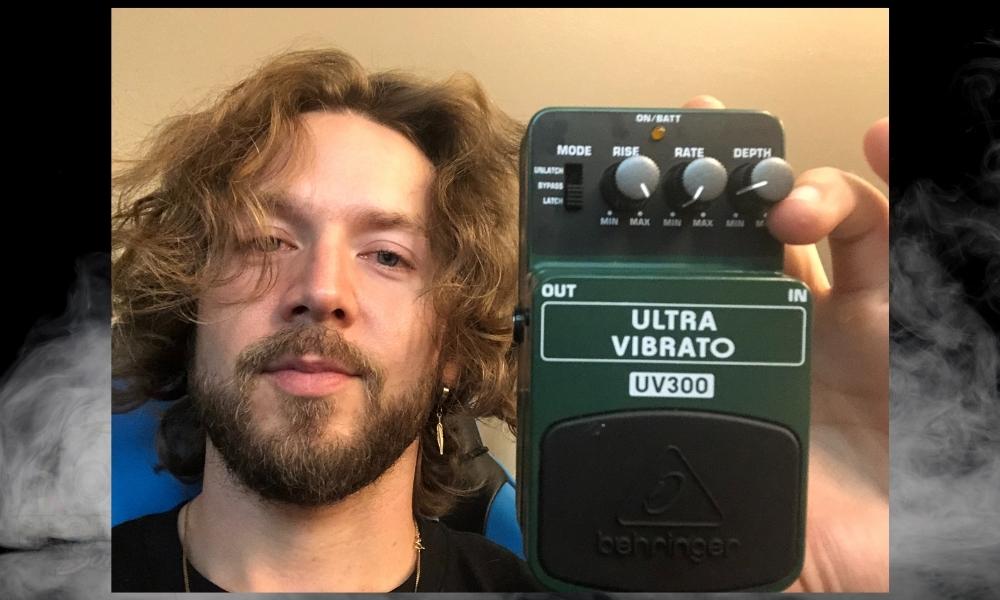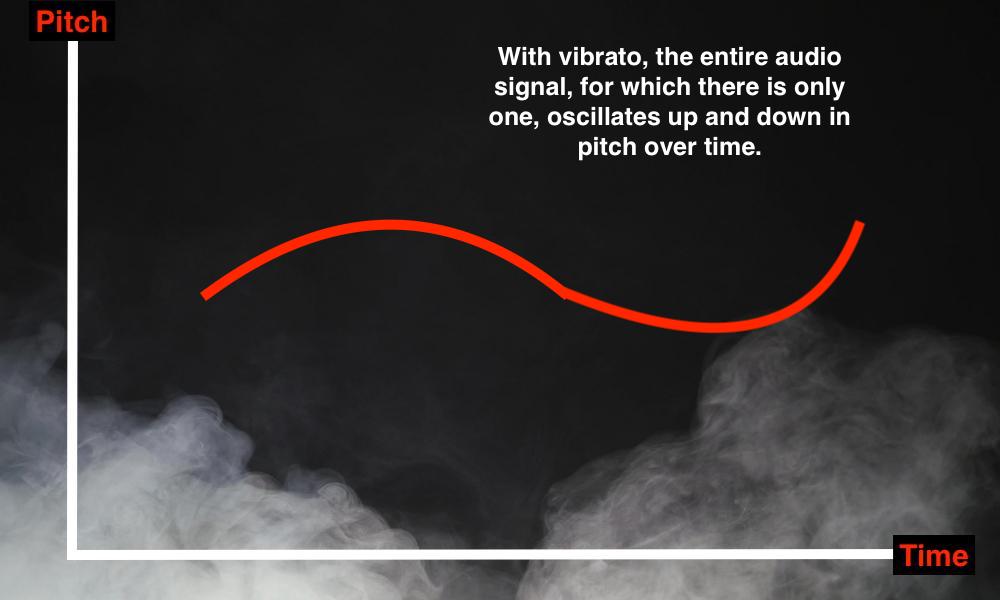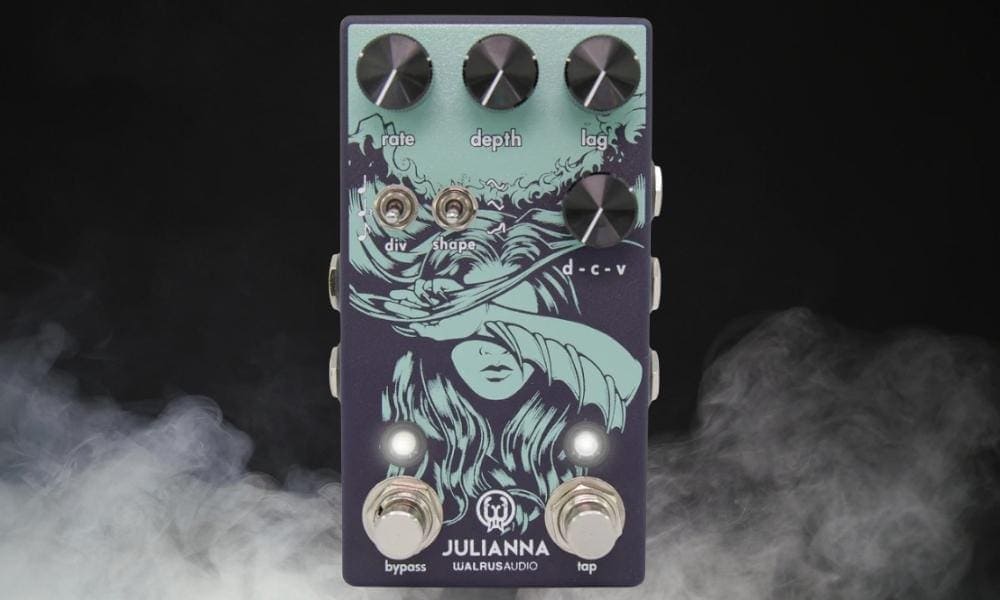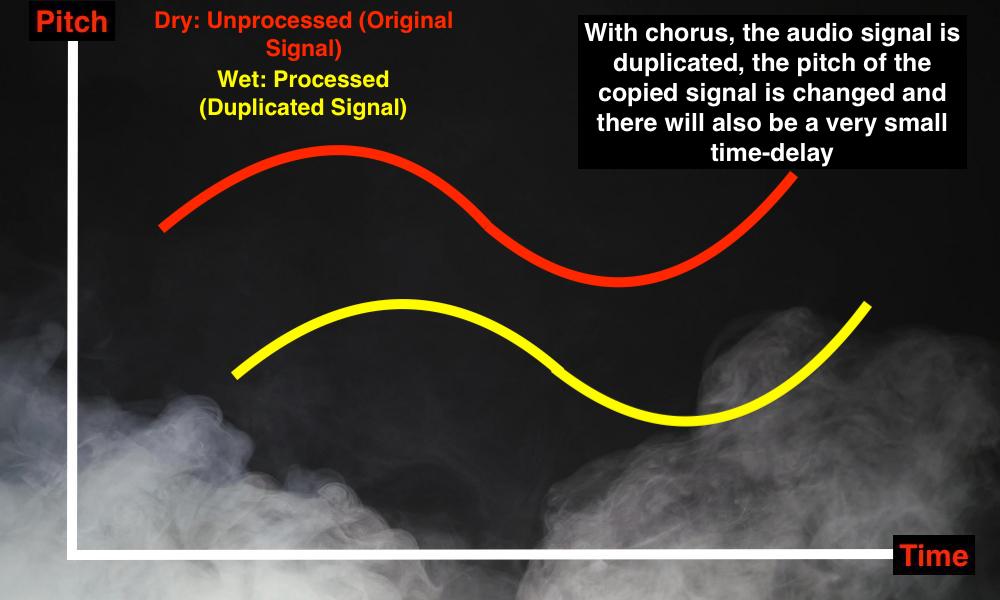There are a lot of pedal effects for the guitar – and other instruments too. Some of them even have similar names despite being totally different, or they’re used interchangeably despite their differences, ie, vibrato and tremolo.
As a result, it can take some research to really figure out which is which in the guitar-playing world, and vibrato and chorus are no different. I know the Juliana vibrato/chorus pedal even has both of them in one. So what’s the difference?
Generally speaking, the difference between vibrato and chorus is that vibrato is an oscillation in pitch over time of one signal, whereas the chorus effect is an oscillation in pitch and timing of a duplicated audio signal, which is then mixed in with the unprocessed signal.
And that’s pretty much it for the main differences between the two, however, I understand the above paragraph is a bit heavy on the jargon. For that reason, we’re going to dive into the explanation in a bit more detail in the sections below, as well as some other key points.
What Is Vibrato?

When I think of vibrato, I naturally think of the guitar and really any stringed instrument, but the guitar comes first because that’s what I play. If you’re on this site, you, too, probably play guitar as well, and you know what vibrato is.
Vibrato, in the context of the guitar, is when you gently, and with a bit of speed, pluck a string and push it up and down to change the pitch over time.
It isn’t to be confused with a bend, which is when you bend it and change the pitch for the entire duration of the note. Vibrato is an oscillation in pitch and a guitar string that’s slowly being moved up and down is a great example.

But what about in the context of other instruments? Vibrato is still the same thing, but how you oscillate the pitch over time will be slightly different because you might not be using a stringed instrument.
Stringed instruments serve themselves best for vibrato because it’s so easy to change the pitch. You just apply a bit of pressure to the string in one direction or another.
For instance, if you’re on the piano, you would probably need an expression pedal. While technically a piano is a stringed instrument because the hammers strike strings in the back of the piano, you press on keys instead.
So the means by which you would create vibrato are fundamentally altered. There are also pedals (obviously), plugins, expression units, and other tools that you can use to create an oscillating pitch.
Vibrato pedals are probably the easiest to use though, and I also created a guide on how to best utilize one. But what about chorus? And why do we so often mention vibrato and chorus in the same context? Let’s get into that now.
What Is Chorus?

Simply put, chorus is when you duplicate an audio signal, change the pitch very subtly, and then add a time-based delay to that copied signal. From there, the duplicated audio signal is mixed in with the unprocessed or “dry” signal.
It’s important to state that with chorus, you’re duplicating the dry guitar signal. So you have two different signals, the original one that doesn’t have any processing or effects on it, and then you have the one that does.
When you mix these two signals together, you get the characteristic and unmistakable sound of chorus that can be heard on literally oodles of popular songs in music, although, I feel like it isn’t used quite as much as it used to be.

You should have a pretty good idea of what vibrato and chorus are now, however, I think it’s worth our time to really pinpoint the primary differences in the section down below.
What’s The Difference Between Vibrato and Chorus?
![Vibrato vs Chorus - What's the Difference [ANSWERED]](https://travelingguitarist.com/wp-content/uploads/2022/11/Vibrato-vs-Chorus-Whats-the-Difference-ANSWERED-.jpg)
Let’s get precise when we talk about the differences between chorus and vibrato.
1) Vibrato Changes Pitch of 1 Signal
For starters, a vibrato pedal or vibrato effect will alter only one signal at a time. As I explained earlier, if you connect a vibrato pedal to your guitar rig and turn it on, it’ll adjust the pitch of just one guitar signal over time.
2) Chorus Mixes A Dry (Unprocessed) & Wet Signal (Processed)
With chorus, you have a dry and wet signal, the former is unprocessed and the latter is processed. Chorus pedals literally duplicate or copy the original signal and then mix them together.
Additionally, almost all chorus pedals will have some kind of a knob or parameter that you can adjust by how much the two signals are mixed. So you can have a 50/50 dry-wet combination, or a 90/10, or whatever you want.
3) Vibrato Only Changes Pitch and Not Time
Another fundamental difference between the two is that chorus also adds a time-based delay. It slightly alters the timing of the processed signal and mixes it in with the dry signal.
This means it’s slightly off-time with the original, and the effect is the legendary chorus sound that everyone knows and loves.
A Demonstration of the Difference Between Vibrato and Chorus
The video down below does a great demonstration of the differences between vibrato and chorus effects. For more information and explanation, this Reddit thread also does a great job of elucidating some of the differences.
Other Articles You May Be Interested In
- How to Use A Volume Pedal As An Expression Pedal [SIMPLE]
- How to Use A Tremolo Pedal [A Step-By-Step Guide]
- How to Use A Volume Pedal [An Illustrated Guide]
- How to Use A Noise Gate/Suppressor Pedal [Dead Simple]
- How To Use A Digitech Whammy Pedal [The Ultimate Guide]
Important Things to Note About Chorus and Vibrato
1) Some Vibrato And Chorus Are In 1 Pedal
As I alluded to earlier, it’s not uncommon at all to find pedals on the market, including the aforementioned Walrus Audio Juliana pedal, that has chorus and vibrato in one device.
The reason for this is that the two pedals do practically the same thing, it’s just that one duplicates the signal and changes the timing whereas the other one only changes the pitch.
It’s very easy to combine both pedal effects together because, from what I understand about them, the circuitry is similar.
Gear Mentioned
1) Walrus Audio Juliana Chorus
2) Behringer UV300 Vibrato Pedal

 Written By :
Written By :